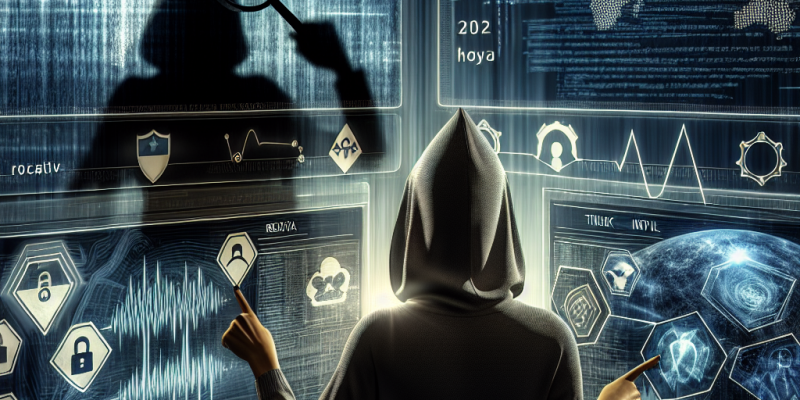“From Reactive to Proactive: Shaping Cybersecurity with Threat Intelligence in 2025”

In 2025, the landscape of cybersecurity is shifting dramatically. Organizations are moving from a reactive approach, where they respond to threats after they occur, to a proactive strategy. This transformation is driven by the increasing sophistication of cyber threats and the growing importance of threat intelligence.
Understanding Threat Intelligence
Threat intelligence refers to information that helps organizations understand, anticipate, and prevent cyber threats. This data can come from various sources, including security teams, intelligence agencies, and open-source information. In 2025, companies are leveraging this information to make informed decisions about their cybersecurity strategies.
The Shift from Reactive to Proactive
Traditionally, companies waited for cyberattacks to happen before taking action. This meant that they often faced severe consequences, including data breaches and financial losses. However, with the help of threat intelligence, organizations can now identify potential threats before they become serious problems.
-
Predictive Analysis: In 2025, companies are using advanced analytics to predict potential threats. By analyzing data on previous attacks and current trends, security teams can identify vulnerabilities and act before incidents occur.
-
Enhanced Detection: With artificial intelligence and machine learning, security systems can detect unusual behavior in real-time. This allows organizations to respond quickly to potential threats, minimizing damage.
-
Continuous Monitoring: Cybersecurity is no longer a one-time effort. Organizations are continuously monitoring their networks for suspicious activities. This proactive strategy ensures that threats are addressed before they escalate.
Benefits of Proactive Cybersecurity
Adopting a proactive approach to cybersecurity has several advantages:
-
Reduced Risk: By identifying and addressing vulnerabilities early, organizations significantly lower their risk of data breaches and attacks.
-
Cost Savings: Preventing a cyber incident is often less expensive than responding to one. Companies can save money on recovery efforts and potential fines.
-
Improved Reputation: Organizations prioritizing proactive cybersecurity are seen as trustworthy by customers and partners. This enhances their reputation and can lead to increased business.
Collaboration in Threat Intelligence
In 2025, collaboration among organizations is becoming more common. Companies are sharing threat intelligence to enhance their security posture. By working together, organizations can better understand emerging threats and defend against them.
-
Information Sharing Platforms: Many industries are establishing platforms where companies can exchange threat data. This is crucial for staying informed about the latest trends and tactics used by cybercriminals.
-
Public-Private Partnerships: Governments and businesses are collaborating to improve national cybersecurity. These partnerships allow for a more comprehensive understanding of threats and a collective response to challenges.
Future Challenges
While the shift to proactive cybersecurity is promising, it is not without challenges. One major concern is the growing complexity of cyber threats. Cybercriminals are constantly evolving their tactics, making it necessary for organizations to continuously adapt their defenses.
Additionally, the reliance on technology can lead to new vulnerabilities. As organizations implement more automated systems, they must ensure these tools do not introduce new risks.
Conclusion
As we progress through 2025, the importance of threat intelligence in shaping cybersecurity cannot be overstated. By moving from a reactive to a proactive approach, organizations can better protect themselves from the ever-evolving world of cyber threats. Through collaboration and advanced technology, the future of cybersecurity looks promising. As more businesses embrace this shift, we can hope for a safer digital world.














